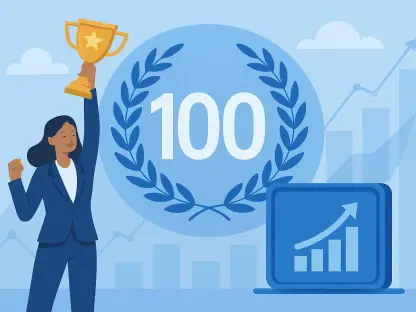In a world where commercial real estate stumbles under the weight of post-COVID uncertainty, one investment giant has defied the odds with a jaw-dropping achievement that sets a new standard. Carlyle, a titan in the global investment arena, has raised an astonishing $9 billion for its latest U.S. real estate fund, setting a new benchmark in an industry where many struggle to stay afloat. This staggering haul, accomplished in one of the toughest fundraising climates in recent memory, raises a burning question: how did Carlyle turn a shrinking market into a goldmine of opportunity? This story uncovers the bold strategies and sharp instincts behind a record-breaking success.
Why This Feat Stands Out: A Market in Turmoil
The real estate investment landscape paints a grim picture, with global private capital raised for the sector hitting a mere $131 billion in the latest reported cycle—the lowest in over a decade. Institutional investors, including pension funds, have grown wary, spooked by declining demand for office spaces and retail properties in a post-pandemic world. Yet, amidst this downturn, a flicker of recovery emerges, and Carlyle’s monumental raise stands as a beacon of what’s possible for those willing to navigate uncharted waters.
This achievement is more than just a number; it signals a potential turning point for an industry grappling with structural challenges. For investors and industry observers alike, the implications ripple far beyond one firm’s success. It highlights how strategic pivots can unlock value even when the broader market seems to falter, offering a glimpse into the resilience required to thrive amid economic headwinds.
The Strategy Behind the $9 Billion Triumph
Carlyle’s latest fund, its tenth in the U.S., surpassed the $8 billion raised in its previous effort, a feat made all the more remarkable given the current climate. The firm’s playbook focused on a laser-sharp selection of sectors, pouring capital into residential, self-storage, and industrial properties while steering clear of battered areas like offices and hotels. This deliberate choice reflects a deep understanding of where growth fundamentals remain strong despite overarching market pessimism.
Timing also played a critical role in this victory. With liquidity drying up across the sector, fewer buyers and competing capital sources have created a buyer’s market for those with the resources to act. Carlyle seized this window, acquiring assets at potentially lower costs and with reduced competition, a move that positioned the firm to maximize returns when recovery gains traction.
A cornerstone of this success lies in investor trust, meticulously built over years of proven performance. Even in a risk-averse environment, the firm’s track record and transparent approach reassured hesitant capital, drawing commitments that others could only dream of. This blend of sector focus, opportunistic timing, and credibility turned a daunting market into a platform for a historic raise.
Expert Voices Shed Light on the Achievement
Rob Stuckey, head of U.S. real estate at Carlyle, didn’t shy away from acknowledging the harsh realities, describing the fundraising environment as “one of the most difficult for real estate in recent memory.” His perspective underscores the firm’s ability to turn adversity into advantage, leveraging a low-competition landscape to secure high-value opportunities. Stuckey’s insights reveal a calculated boldness, a willingness to bet on select niches when others hesitated.
Industry experts echo this sentiment, pointing to persistent hurdles like shifting workplace trends and retail disruptions that continue to plague real estate. Yet, they also note the untapped potential in specific segments, such as industrial spaces driven by e-commerce growth. Carlyle’s approach, backed by sharp market analysis and deep experience, exemplifies how expertise can carve out success in a field littered with cautionary tales.
Decoding the Blueprint for Market Mastery
Carlyle’s journey offers a roadmap for firms and investors facing similar storms in volatile sectors. One key lesson lies in pinpointing growth pockets—sectors like residential and industrial properties where demand trends upward, even as traditional markets like offices crumble. This targeted focus ensures capital flows toward areas with tangible potential rather than speculative risks.
Another critical takeaway is the power of exploiting market gaps. Periods of low liquidity, while intimidating, can become a strategic edge for those with the means to act, allowing for better deal terms and asset pricing. Carlyle’s ability to move decisively in such conditions serves as a model for turning scarcity into opportunity, a tactic applicable beyond real estate to any constrained investment landscape.
Finally, the importance of fostering investor confidence cannot be overstated. A strong historical performance, paired with clear communication, can sway even the most cautious backers. For any entity aiming to secure capital in tough times, this principle of trust-building stands as a non-negotiable pillar, one that Carlyle has mastered to remarkable effect.
Reflecting on a Milestone and Looking Ahead
Looking back, Carlyle’s $9 billion fundraising feat stood as a defining moment, a testament to strategic foresight in an era when the real estate market tested even the strongest players. The firm’s disciplined avoidance of faltering sectors and its sharp focus on growth areas like industrial and residential properties carved a path through uncertainty. This achievement illuminated the dual nature of the industry—a landscape of struggle for many, yet a fertile ground for those with vision.
Moving forward, the lessons from this success beckon others to adapt with similar precision. Investors and firms should consider honing their focus on emerging trends, whether in real estate or beyond, while seizing moments of market dislocation to strike advantageous deals. As the industry continues to evolve, the challenge lies in balancing caution with courage, ensuring that capital finds its way to opportunities that promise sustainable growth.









